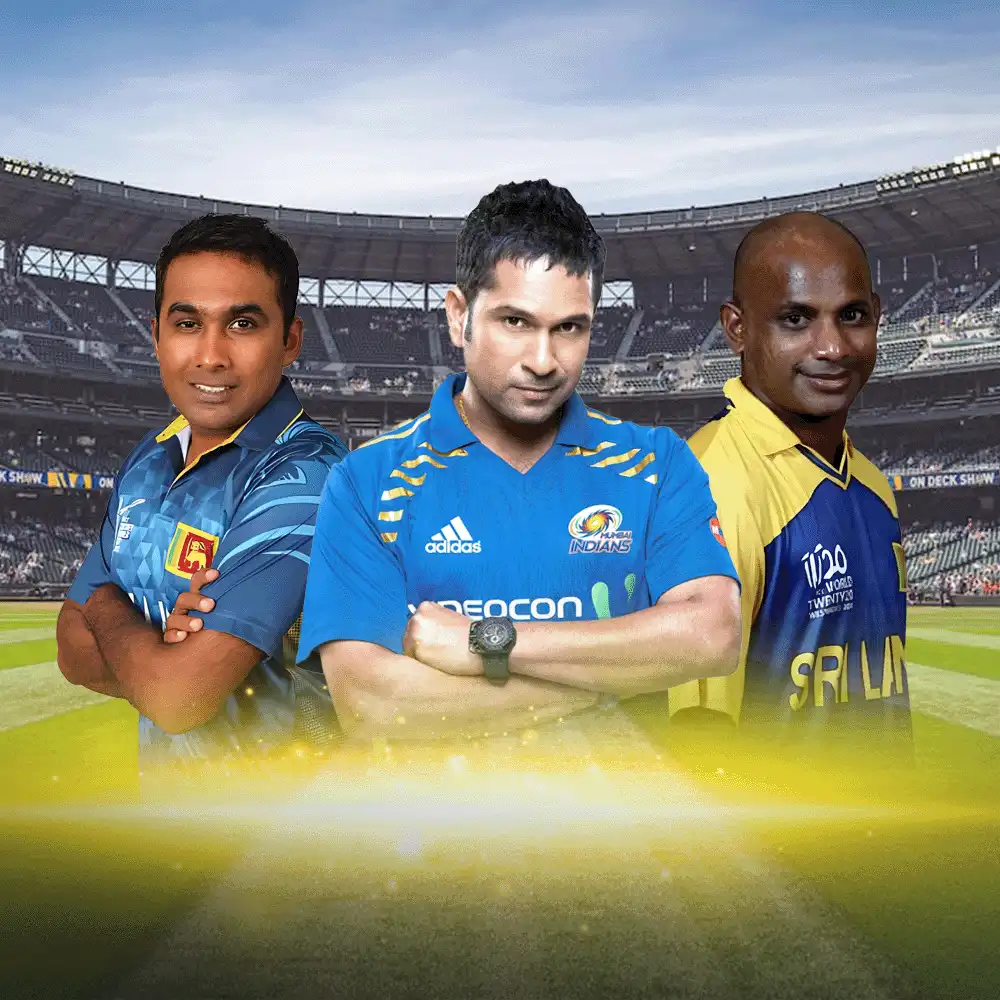

Top 3 Players with Most ODI series played
151Views 0Like
In One Day International (ODI) cricket, a few players have made a lasting impact with their incredible dedication and long careers. With the most ODI series played, these players have left an unforgettable mark on cricket and continue inspiring new generations.
1. Sachin Tendulkar 463 ODIs played
Sachin Tendulkar, born on April 24 1973, is regarded as one of the greatest batsmen in cricket history. Throughout his career, Tendulkar showcased a level of consistency and dedication that set him apart from his peers.
A Record-breaking ODI Journey
At age 16, Sachin Tendulkar’s ODI journey began on December 18, 1989. He made his debut against Pakistan, and since then, there was no looking back, as he amassed amassing runs with remarkable ease. Over the years, Tendulkar’s performances in the ODI format became a defining aspect of his cricketing legacy.
As he continued to pile up the runs and rewrite records, his longevity in the sport was a testament to his fitness, determination, and love for the sport. As he progressed through his career, Tendulkar participated in 463 ODI series, a feat that remains unparalleled in the game’s history. He achieved 48 centuries in ODIs and another 51 in Test matches, the world’s record for highest number of centuries by a batsman. He was the first and only cricketer to score 100 international centuries.
Batting Brilliance
From his early years to the twilight of his career, Tendulkar’s dedication to the game never wavered, earning him the respect of fans, teammates, and opponents alike. In his 463 ODI matches, he scored 18,426 runs at an impressive batting average of 44.83. This noteworthy achievement comprised 48 centuries and an impressive tally of 96 half-centuries.
One of Tendulkar’s career highlights was during the 2011 Cricket World Cup, where he was a key player for India. He scored crucial runs in several matches, contributing heavily to India’s success. His innings of 85 against Pakistan in the semi-final and performance against Sri Lanka were instrumental in their victory.
An Inspiration to Generations
Sachin Tendulkar’s impact on the cricketing world extends far beyond just statistics, as he has become an icon worldwide. He has become an inspiration to aspiring cricketers to pursue their dreams. Aspiring cricketers worldwide emulate his batting style, work ethic, and humility, hoping to achieve a fraction of what Tendulkar accomplished throughout his career.

Mushfiqur Rahim’s International Cricket Career
2. Mahela Jawaradene – 448 ODIs played
Mahela Jawaradene, born May 27 1977, hailed from Sri Lanka with an illustrious career spanning over two decades. He is known as one of the greatest batsmen and captains in ODI cricket, with 448 ODI matches played.
Early Days and Rise to Prominence
Mahela Jayawardene displayed a passion for cricket from a young age. His elegant strokeplay was evident in his formative years. Making his ODI debut for Sri Lanka in January 1998 against Zimbabwe, he announced his arrival to the world stage with a century against India.
Jayawardene’s style and ability to adapt to various conditions and situations made him a valuable asset for the Sri Lankan team. His partnership with another Sri Lankan legend, Kumar Sangakkara, became the cornerstone of the team’s batting lineup.
Batting Brilliance
Mahela Jayawardene’s batting prowess was evident in his consistently high performance. He amassed 12,650 runs in his 448 ODI matches, including 19 centuries and 77 half-centuries, at an impressive average of 33.37. His ability to construct innings and build partnerships made him a dependable player in crucial situations.
One of Jayawardene’s career highlights was his innings during the 2007 Cricket World Cup. In the final against India, he played a magnificent knock of 103 runs. Despite the loss, his performance was recognised with the Man of the Match award, emphasising his importance to the Sri Lankan side.
Captaincy and Leadership
In addition to his batting prowess, Mahela Jayawardene’s leadership skills were highly regarded within the cricketing fraternity. He took over the captaincy of the Sri Lankan ODI team in 2003 and led them with distinction for several years. His calm demeanour and strategic insight on the field made him an influential captain.
Under Jayawardene’s leadership, Sri Lanka reached the finals of the 2007 ICC World Cup Twenty20 and the 2012 ICC World Cup Twenty20. Additionally, they reached the final of the 2011 ICC Cricket World Cup, narrowly losing to India. Jayawardene’s leadership was instrumental in instilling a sense of unity and fighting spirit in the team.
Legacy and Post-Retirement
After a glorious international career, Jayawardene said farewell to ODI cricket in March 2015. His impact on Sri Lankan cricket continued even after retirement. He played an active role in mentoring young talents and contributing to the development of the sport in his country.
Beyond the cricket field, Jayawardene’s sportsmanship and humility earned him respect from players and fans alike. He remained a role model for aspiring cricketers and was seen as a statesman of the game.
3. Sanath Jayasuriya – 445 ODIs played
Sanath Jayasuriya, born June 30, 1969, is a cricketing icon renowned for revolutionising the One Day International (ODI) format. With a career that spanned over two decades and 445 ODI matches played, Jayasuriya played a role in shaping international cricket in Sri Lanka. Known for his aggressive batting style and exceptional all-around abilities, he remains legendary in the sport’s history.
Jayasuriya began his cricket journey at a young age, where he first gained prominence as a left-arm spinner. Despite that, his explosive batting would become his trademark. His style of play was unconventional for his time due to power-hitting with innovative strokeplay, regularly taking on the opposition’s bowlers from the outset of an innings.
The Explosive Batting Phenomenon
Sanath Jayasuriya’s fearless batting approach revolutionised the game as an opening batsman. He transformed the role of the first ten overs of an ODI match, and his partnership with Romesh Kaluwitharana at the top of the order became a nightmare for the bowler.
Jayasuriya’s aggressive style peaked during the 1996 Cricket World Cup, where he was instrumental in guiding Sri Lanka to its first-ever World Cup victory. His blistering 115 runs off just 82 balls in the semi-final against India was a defining moment in the tournament. Jayasuriya’s ferocious batting earned him the Player of the Tournament award, showcasing his undeniable impact on the global stage.
In addition to his explosive batting, Jayasuriya was an accomplished all-rounder. He bowled left-arm spin with deceptive flight and turned, often chipping in with crucial wickets for his team. His ability to contribute with both bat and ball made him a complete player and added tremendous value to the Sri Lankan team.
Throughout his career, Jayasuriya scored 13,430 runs in 445 ODI matches, including 28 centuries and 68 half-centuries, at an impressive average of 38.39. He claimed 323 wickets as a bowler, making him one of the most successful all-rounders in ODI cricket history.
A Mentor and Statesman
Beyond his cricketing achievements, Sanath Jayasuriya’s leadership and mentorship qualities were also highly regarded. He served as Sri Lanka’s captain, guiding the team with his experience and cricketing wisdom. He inspired young cricketers, using his knowledge and expertise to nurture future talent.
Post-Retirement Contributions
Sanath Jayasuriya bid farewell to ODI cricket in 2011 but continued contributing. He remained involved in cricket administration, serving as a selector and administrator for Sri Lanka Cricket. His dedication to the sport extended beyond his playing days, as he worked tirelessly to ensure the continued development of cricket in Sri Lanka.

Latest News
Top 3 Players with Most ODI series played
Erling Haaland Named PFA Player of the Year
Litton Das To Miss First Match in Asia Cup
UEFA Club Rankings
Players Are Excited for PKL10, Says Chhillar
– Advertisement –
– Advertisement –
– Advertisement –
– Advertisement –
– Advertisement –